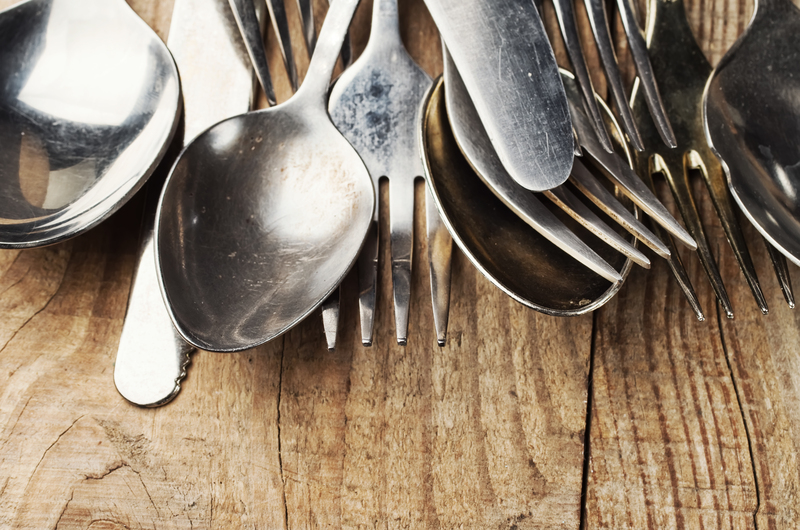Revive Your Stovetop with These Burnt Residue Cleaning Hacks
Posted on 27/06/2025
Revive Your Stovetop with These Burnt Residue Cleaning Hacks
Is your stovetop looking dull and grimy, littered with stubborn burnt-on residue that just won't budge? Don't fret! With the right techniques and a bit of patience, you can restore your stovetop's shine and make it look almost brand-new. In this comprehensive guide, discover the best burnt residue cleaning hacks for every type of stovetop. Whether you have a gas, electric, or glass cooktop, these proven cleaning methods will save you time and frustration.
Why Burnt Residue Builds Up on Your Stovetop
Before learning the hacks, it helps to understand why burnt residue accumulates. Cooking inevitably leads to splatters, spills, and sometimes overflows. When food or liquid hits the hot surface, it can scorch and stick. Over time, these burnt spills turn into tough layers of grime that seem almost impossible to remove.
- Boiling-over pots
- Greasy splatters
- Sugar or sauces caramelizing
- Forgotten food debris
If these are not cleaned up promptly, they carbonize, forming resilient patches that simple wiping won't dislodge. But don't worry, you don't need fancy products or professional help. Below, find the best stovetop cleaning solutions that actually work.

Essential Tools and Supplies for Cleaning Burnt Stovetop Residue
Every successful cleaning session starts with gathering the right gear. Stock up on the following:
- Microfiber cloths and sponges (non-scratch)
- Baking soda
- White vinegar
- Dish soap
- Razor blade scraper (for glass cooktops)
- Lemon juice
- Old toothbrush
- Plastic spatula
- Hydrogen peroxide (optional for tough stains)
- Commercial stovetop cleaner (optional)
Having these within arm's reach makes the process much smoother and more effective.
Effective Burnt Residue Cleaning Hacks for Every Stovetop
1. Baking Soda and Vinegar Power Paste
This classic combination is a game-changer for tackling tough burnt-on messes.
- Generously sprinkle baking soda over the soiled area while the cooktop is completely cool.
- Lightly spray or pour white vinegar over the baking soda. It will fizz as it breaks down grime.
- Let the mixture sit for 10-15 minutes to lift away stubborn residue.
- Use a soft sponge or cloth to gently scrub in circular motions.
- Wipe off the residue with a damp microfiber cloth and dry thoroughly.
Why it works: Baking soda is mildly abrasive, so it lifts away caked-on debris without scratching, while vinegar helps dissolve mineral stains, grease, and food particles.
2. Steam Cleaning with Boiling Water
- Place a small pot of water on your stovetop burners and bring to a boil.
- Let the steam circulate for several minutes. Steam loosens burnt residue on electric and glass stovetops especially well.
- Switch off the burner and allow to cool slightly. Carefully wipe away loosened grime with a soft cloth.
*Tip: For tough spots, drape a warm, damp towel over the area and let it sit for 10 minutes before wiping.*
3. Lemon Juice and Baking Soda Scrub
Lemon juice is naturally acidic, making it a top contender for breaking down burnt residues and adding a fresh scent too.
- Cut a lemon in half and sprinkle baking soda onto the open side.
- Scrub the burnt stains directly with the lemon, squeezing gently as you go.
- Let sit for 5-10 minutes before wiping clean with a damp cloth.
Pro-tip: This method is especially good for removing grease stains and restoring shine to metal surfaces.
4. The Razor Blade Trick (For Glass Cooktops Only)
If you have a smooth glass stovetop, a razor blade scraper is your secret weapon.
- Remove any burner grates or rings if possible.
- Gently use a razor blade scraper, holding at a 45-degree angle.
- Lightly scrape off the burnt residue, being careful not to press too hard or scratch the glass.
- Wipe away debris and finish with a baking soda/vinegar clean.
Warning: Never use razor blades on ceramic or metal cooktops, as you can scratch or damage the surface.
5. Commercial Cleaners and Degreasers
When home remedies don't cut it, reach for a high-quality stovetop cleaner or degreaser designed for your specific cooktop material.
- Follow manufacturer's instructions.
- Pay attention to ventilation and avoid mixing with other chemicals.
- Rinse thoroughly after application to remove any chemical residue.
*Always wear gloves when using commercial cleaning products.*
6. Overnight Cleaning Soak
Some burnt residue is extremely stubborn and requires a longer soak.
- Mix a thick paste using baking soda and water, then spread it generously over the burnt areas.
- Cover with a damp cloth or plastic wrap.
- Leave overnight to allow the paste to break down residues.
- In the morning, use a sponge or non-abrasive scrubber to wipe clean.
This is one of the most effective burnt stovetop cleaning hacks for deep cleans or neglected cooktops.
How to Clean Different Types of Stovetops
- Gas Stovetops: Remove burner grates and soak them in hot, soapy water. Clean the stovetop using the above hacks, being careful not to get water in the gas ports.
- Electric Coil Stovetops: Unplug and remove the coils. Clean the drip pans with baking soda and vinegar. Wipe the main surface using your preferred cleaning solution.
- Glass or Ceramic Cooktops: Use non-abrasive scrubbing pads and always avoid harsh chemicals or metal tools. The baking soda, vinegar, and razor blade trick works especially well.
Don't Forget the Small Parts!
Burner grates, knobs, and drip pans also collect grime. Soak them in warm, soapy water, then scrub using a toothbrush or sponge. For stubborn spots, try a paste of baking soda and water.
How to Prevent Burnt Residue on Your Stovetop
While learning burnt residue cleaning hacks will save you, prevention is always easier. Adopt these habits for a perpetually clean stovetop:
- Wipe down spillages quickly before they have a chance to burn and set.
- Use splatter guards when frying or cooking oily foods.
- Clean your stovetop after every major cooking session.
- Deep clean with baking soda and vinegar weekly to prevent buildup.
- Keep burner grates and drip pans clean for more even heating.
Regular maintenance is the best hack of all for avoiding burnt-on messes!
Natural vs. Chemical Burnt Residue Solutions
When it comes to cleaning a burnt stovetop, both natural and commercial solutions can work. Here's how to choose:
- Natural/Home Remedies (baking soda, vinegar, lemon): Eco-friendly, non-toxic, and usually cheaper. Safe for most surfaces and household members.
- Commercial Stovetop Cleaners: Provide heavy-duty cleaning power and can tackle especially persistent stains. Must be used with care (follow safety instructions).
*Tip: If uncertain, always spot-test new cleaners on a small, hidden area first.*
Frequently Asked Questions About Burnt Residue on Stovetops
Can I use steel wool or abrasive pads on my stovetop?
No. Steel wool and harsh pads can scratch or damage your stovetop's finish, especially glass and ceramic models. Always use non-abrasive sponges or soft cloths.
What's the safest way to remove burnt residue from a glass cooktop?
Use a razor blade scraper at a shallow angle and follow up with a baking soda and vinegar paste. Never use excessive force--be gentle to preserve the glass surface.
How often should I deep clean my stovetop?
A weekly deep clean is ideal for busy kitchens. Wipe spills and splatters after every meal to prevent buildup and make deep cleaning less of a chore.
Are commercial stovetop cleaners safe for all surfaces?
Not always. Some are optimized for certain materials. Read labels and manufacturer instructions before applying. When in doubt, stick to baking soda and vinegar.
Help! My electric stove coils have burnt-on food. What should I do?
Unplug and remove the coils (if possible). Wipe with a damp cloth only when completely cool. For stubborn stains, gently use a baking soda paste. Never submerge coils in water.

Bonus Stovetop Cleaning Hacks & Pro Tips
- Hydrogen Peroxide Booster: For extremely stubborn burnt-on messes, make a paste of baking soda and hydrogen peroxide. Apply, let sit for 10 minutes, then scrub and rinse.
- Olive Oil Finishing Touch: After cleaning, buff your stovetop with just a drop of olive oil to add a shine and make future cleanups easier.
- Toothbrush Tool: An old toothbrush is perfect for getting into little nooks and crannies around knobs and burners.
- Plastic Spatula: Use a plastic spatula to carefully scrape larger debris before applying cleaning paste.
Conclusion: Restore Your Stovetop's Sparkle
A burnt, grimy stovetop can make your whole kitchen look less inviting. But with these burnt residue cleaning hacks--from baking soda and vinegar pastes to lemon scrubs and razor blades--you can revive your stovetop quickly and safely. Remember to tailor your cleaning method to your cooktop type, stick to non-abrasive materials, and give your stovetop a little love every week. Adopting these stovetop restoration strategies not only keeps your kitchen beautiful, but also ensures safe, efficient cooking for years to come.
Don't let burnt residue dull your kitchen's shine. Try these cleaning hacks today and see the gleaming results for yourself!





